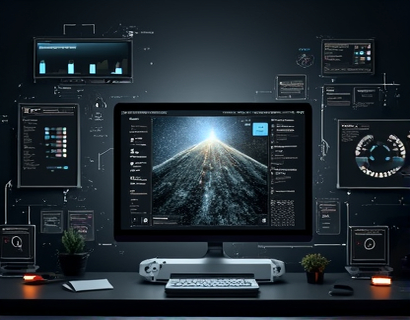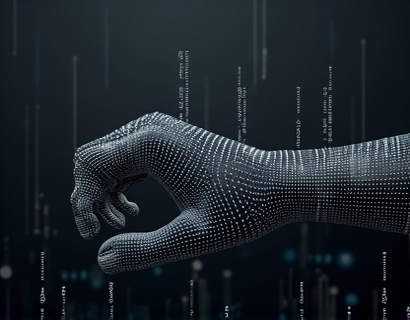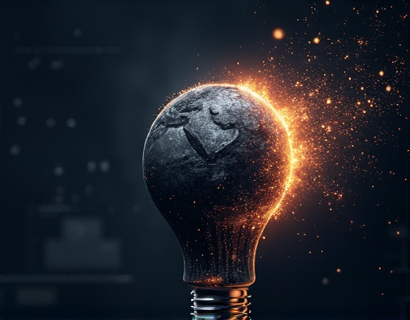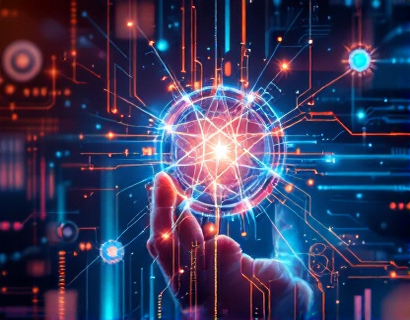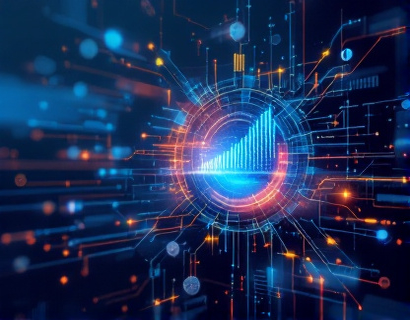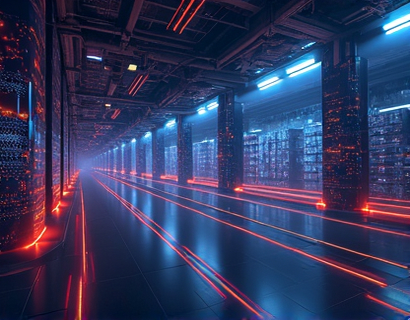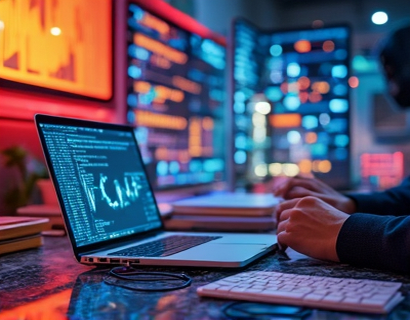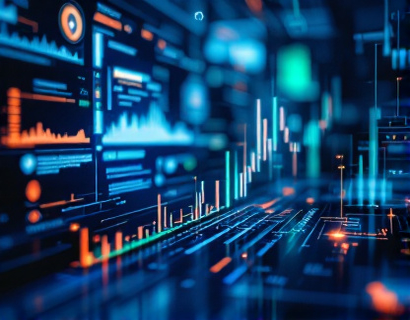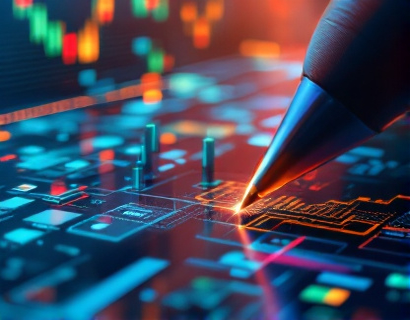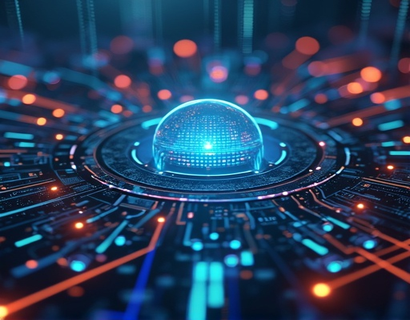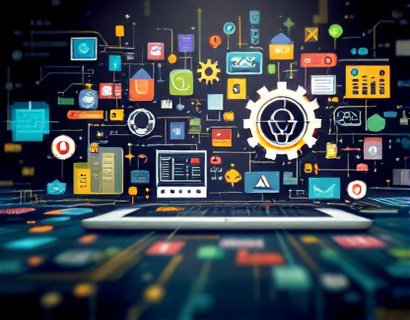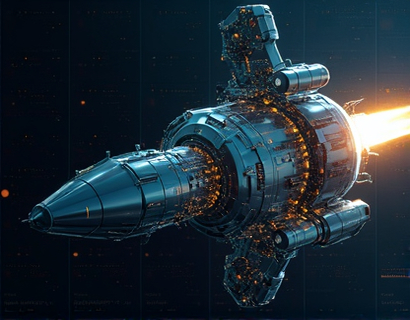Empowering Early Adopters and Tech Innovators with Next-Gen Digital Solutions
The intersection of cryptocurrency and artificial intelligence (AI) is giving rise to a new era of digital transformation. This convergence is not just a technological curiosity but a powerful force that is redefining how we interact with digital platforms and applications. For tech innovators and early adopters, the potential of merging these two cutting-edge technologies is immense. This article delves into the transformative power of AI and crypto, exploring how they combine to create seamless, advanced applications that enhance online experiences and drive digital transformation.
The foundation of this new digital landscape lies in the unique properties of blockchain technology and the computational prowess of AI. Blockchain provides a decentralized, secure, and transparent framework for transactions and data management. AI, on the other hand, brings intelligent automation, predictive analytics, and personalized experiences to the table. When these technologies are combined, they create a synergy that can revolutionize various sectors, from finance and healthcare to entertainment and education.
Enhancing Security and Trust
One of the most significant benefits of integrating AI and crypto is the enhancement of security and trust in digital transactions. AI algorithms can detect and prevent fraudulent activities with high accuracy, reducing the risk of cyber threats. Smart contracts, powered by blockchain, ensure that transactions are executed only when predefined conditions are met, eliminating the need for intermediaries and reducing the potential for errors or manipulation. This combination not only secures data but also builds trust among users, a critical factor for adoption in any technology ecosystem.
For early adopters, this means a more secure and reliable digital environment. They can engage in peer-to-peer transactions, access decentralized applications (dApps), and store value in a manner that is resistant to traditional points of failure. The transparency of blockchain ensures that all transactions are verifiable, adding an extra layer of trust. AI-driven security measures further fortify this ecosystem, making it an attractive option for those who value both innovation and security.
Personalization and User Experience
AI's ability to analyze vast amounts of data and derive meaningful insights is a game-changer for personalization. In the context of crypto and AI, this means tailored experiences for users based on their preferences, behavior, and historical data. For instance, AI can analyze a user's trading patterns to provide personalized investment recommendations or suggest optimal times for buying and selling cryptocurrencies. This level of personalization not only enhances user satisfaction but also increases the efficiency of digital services.
Moreover, AI-powered chatbots and virtual assistants can offer real-time support and guidance, making the user experience smoother and more intuitive. These AI-driven tools can understand natural language, recognize user intent, and provide relevant information or assistance, reducing the need for human intervention. For tech innovators, this means a more seamless and efficient interaction with digital platforms, which can significantly improve productivity and satisfaction.
Optimizing Operations and Efficiency
The integration of AI and crypto can also optimize operations and improve efficiency across various industries. For example, in the finance sector, AI can automate routine tasks such as data entry, compliance checks, and risk assessment, freeing up human resources for more strategic activities. Blockchain technology ensures that these processes are transparent and immutable, reducing the risk of errors and fraud. This dual approach not only streamlines operations but also reduces costs and enhances overall efficiency.
In the realm of supply chain management, AI and blockchain can provide end-to-end visibility and traceability. AI algorithms can predict demand, optimize inventory levels, and identify bottlenecks, while blockchain ensures that all transactions and movements are recorded and verifiable. This combination can significantly reduce delays, lower costs, and improve the reliability of supply chains, benefiting businesses and consumers alike.
Innovative Financial Instruments and Services
The fusion of AI and crypto is giving birth to new financial instruments and services that were previously unimaginable. Decentralized finance (DeFi) platforms, for instance, leverage AI to create more sophisticated and accessible financial products. AI-driven algorithms can analyze market trends, assess risks, and optimize portfolios, making decentralized investing more viable for a broader audience. This democratization of finance empowers individuals and small businesses, providing them with tools and opportunities that were once reserved for large institutions.
Stablecoins, a type of cryptocurrency pegged to stable assets like fiat currency or commodities, benefit from AI in maintaining their stability and liquidity. AI can monitor market conditions and adjust the supply of stablecoins accordingly, ensuring that they remain pegged and reducing volatility. This stability is crucial for facilitating everyday transactions and storing value, making crypto a more practical alternative to traditional currencies.
Enhancing Creativity and Content Creation
In the creative industries, the combination of AI and crypto is opening new avenues for artists, writers, and content creators. AI can assist in generating ideas, creating art, and even writing content, providing tools that augment human creativity. For instance, AI-generated music, art, and literature can be tokenized and sold as unique digital assets on blockchain platforms. This not only provides new revenue streams for creators but also ensures that their work is securely and transparently distributed and monetized.
NFTs (Non-Fungible Tokens) have become a popular way to represent and trade unique digital assets. AI can enhance the creation and management of NFTs by generating unique and valuable digital art, while blockchain ensures their scarcity and authenticity. This synergy is revolutionizing the way creative works are produced, distributed, and consumed, offering unprecedented opportunities for artists and collectors.
Building Smart Cities and Infrastructure
The impact of AI and crypto extends beyond individual applications to broader societal structures, such as smart cities and infrastructure. AI can optimize urban planning, traffic management, and resource allocation, making cities more efficient and sustainable. Blockchain can ensure the secure and transparent management of public services, from voting systems to utility payments. The combination of these technologies can lead to the development of smart cities that are more responsive, resilient, and equitable.
For tech innovators working on urban development projects, this means access to powerful tools that can transform how cities function. AI-driven analytics can provide insights into citizen needs and behavior, while blockchain can ensure that data and transactions are secure and transparent. This dual approach can lead to more effective and trustworthy urban solutions, improving the quality of life for residents.
Challenges and Considerations
While the potential of AI and crypto is vast, there are several challenges and considerations that must be addressed. Regulatory frameworks are still evolving, and the lack of clear guidelines can create uncertainty for businesses and users. Ensuring compliance with existing laws and advocating for supportive regulations is crucial for the sustainable growth of this ecosystem.
Another challenge is the technical complexity involved in integrating AI and crypto. Developers need to possess a deep understanding of both technologies to create robust and secure applications. Education and training programs can help bridge this gap, equipping professionals with the necessary skills to thrive in this new digital landscape.
Additionally, there are concerns about energy consumption, particularly with blockchain's proof-of-work consensus mechanisms. The environmental impact of crypto mining is a valid issue that needs to be addressed. Exploring more sustainable consensus algorithms and renewable energy sources can help mitigate this concern, making the technology more eco-friendly.
Conclusion
The convergence of AI and crypto is a powerful force that is reshaping the digital world. For early adopters and tech innovators, this combination offers a wealth of opportunities to create innovative solutions that enhance online experiences and drive digital transformation. By leveraging the security, personalization, and efficiency of AI and the decentralization and transparency of crypto, these forward-thinkers can build a future that is more secure, inclusive, and empowering. As the technology continues to evolve, the potential for new applications and use cases will only grow, making this an exciting time to be at the forefront of digital innovation.






